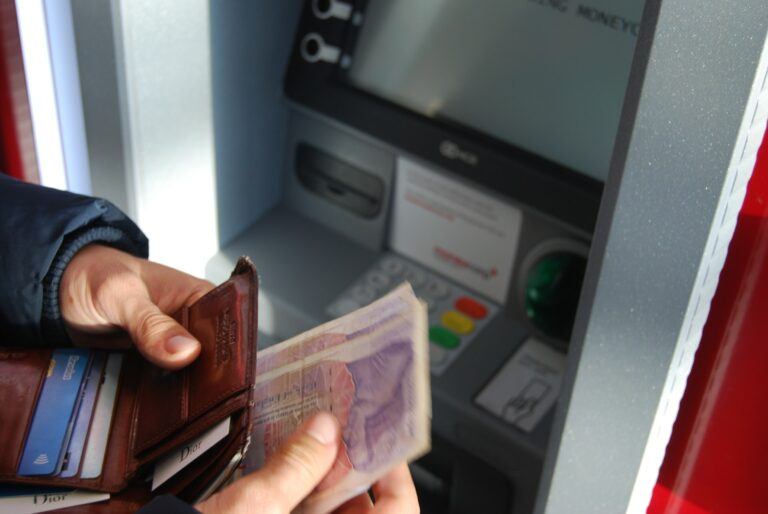There are now more than 10,000 Bitcoin ATMs, aka BTMs, in the world — more than three-quarters of which are installed in the United States.
The first Bitcoin ATM was installed in 2013. That’s seven years between the first Bitcoin ATM installation and the ten-thousandth, compared with the nine years it took banks to do the same with regular ATMs in the 1970s.
What Are BTMs?
Most people think of Bitcoin as an asset people invest in long-term or trade in the markets short-term through brokers and exchanges. But it is also used as a currency to buy consumer goods and services. That has driven the rise of BTMs, which are literally automated teller machines for Bitcoin instead of government-issued currency.
At any BTM, you can buy Bitcoin with regular cash. At some BTMs, you can also sell Bitcoin in exchange for cash. Additionally, most BTMs will let you insert cash to send as Bitcoin to another recipient’s account or Bitcoin wallet.
How to Find BTMs
You’ll often find a BTM standing alongside a regular ATM kiosk. These are appearing with increasing frequency in gas stations and convenience stores across the country.
To find all the BTMs in an area, you can use one of the many Bitcoin ATM maps to search.
Not all BTM networks are alike, with some offering much better customer service than others. Research networks carefully to find the ones that will serve you best. Then be sure the BTMs you find support your chosen network or networks.
How BTMs Work
Using a BTM to buy, sell or send Bitcoin is just as simple as using a regular ATM to deposit, withdraw, or transfer funds. Just follow these steps:
Buying Bitcoin at a BTM
- Create a secure account with the given Bitcoin ATM operator.
- Obtain a Bitcoin wallet in which to store records of all Bitcoin transactions you make. You can download any number of smartphone apps to accomplish this. Just search your app store for “Bitcoin wallet.”
- Insert cash into a BTM.
- Indicate the address of the Bitcoin wallet where you want the money to go, whether yours or someone else’s. The BTM will then convert your cash into Bitcoin at the current market rate at the time of your transaction and subtract the operator’s fee or fees. See more on fees below.
- Receive the confirmation the BTM issues you that your Bitcoin wallet now contains a secure record of the deposit.
Selling Bitcoin at a BTM
If you have Bitcoin to sell, that means you must already have a Bitcoin wallet. You may even have more than one. Before you can sell Bitcoin to another party, you need to figure out first which Bitcoin wallet and key to use for the transaction. Then, you must find a BTM that supports that wallet and make sure you have an account set up with its operator.
- At the BTM, log into your account.
- Indicate the amount of Bitcoin you wish to sell and the Bitcoin wallet address from which you wish to sell it.
- Wait for the BTM to verify the transaction with blockchain, or the Bitcoin network. This can take longer than it takes to purchase Bitcoin over a BTM.
- Once your transaction is verified, withdraw the cash you received for the sale, minus the operator’s fee or fees. Note that the exchange will take place at the current market rate for Bitcoin, meaning it may not necessarily be worth the same amount as when you originally bought it.
Note that different BTMs take different lengths of time to process transactions.
Sending Cash or Bitcoin at a BTM
To send Bitcoin over a BTM to another party’s Bitcoin wallet, you simply sell the Bitcoin, as described above, and have the proceeds delivered to your chosen party’s Bitcoin wallet.
To send cash to another party’s Bitcoin wallet over a BTM, make sure you have an account with the particular operator of the BTM you plan to use for the transaction.
- At the BTM, log into your account.
- Indicate how much cash you wish to send and the Bitcoin wallet to which you wish to send it.
- Insert the cash.
- Receive confirmation the cash was successfully converted into Bitcoin and deposited into the wallet you indicated.
BTM Fees
All BTMs charge an operator’s fee, and some also charge a miner’s fee. These fees can vary widely between operators, so it’s worth investigating different operators’ fees and comparing before you decide which ones to set up an account with.
Bitcoin hit an all-time high of close to $20,000 in 2017, at which point the network became clogged with users, making room for other cryptocurrencies to crop up and fill in the gaps. Now, you’ll find crypto ATMs for a range of cryptocurrencies, although nearly one-third of them support exclusively Bitcoin.
Featured image via Unsplash.









